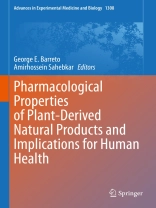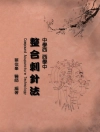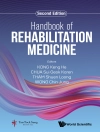Medicinal plants and their derived products remain as an indispensable source of bioactive molecules that serve as either drug candidates or lead compounds for drug design and discovery. There are several advantages for plant-derived therapeutics including wide availability, diverse pharmacological actions and a generally good profile of safety and tolerability. Over the recent years, there have been numerous reports from clinical studies testifying to the efficacy and safety of medicinal plants and phytochemicals in ameliorating several human diseases. A plethora of basic studies has also unravelled molecular mechanisms underlying the health benefits of herbal medicines. Nevertheless, issues such as identification of bioactive ingredients, standardization of the products and drug interactions remain to be further studied. In this book, we aim to put together several chapters on the medicinal properties and pharmacological action of medicinal plants, plant species and phytochemicals. The goal is to present a comprehensive collection on most of the therapeutic aspects of plant-derived natural products and molecular mechanisms thereof.
قائمة المحتويات
The effect of curcumin supplementation on pulse wave velocity in patients with metabolic syndrome: A randomized, double-blind, placebo-controlled trial.- Role of Curcumin in Regulating Long Noncoding RNA Expression in Cancer.- The Effect of Curcumin Phytosome on the Treatment of Patients with Non-alcoholic Fatty Liver Disease: A Double-blind, Randomized, Placebo-Controlled Trial.- Protective effects of curcumin phytosomes against high-fat diet-induced atherosclerosis.- Intravenous Curcumin Mitigates Atherosclerosis Progression in Cholesterol-fed Rabbits.- Updated review on the role of curcumin in gastrointestinal cancers.- Curcumin can bind and interact with CRP: an in silico study.- Antifungal activities of curcumin and difluorinated curcumin against clinical dermatophyte isolates.- Therapeutic Effect of Curcumin in Women with Polycystic Ovary Syndrome Receiving Metformin: A Randomized Controlled Trial.- Effect of Curcumin on Severityof Functional Dyspepsia; a Triple Blinded Clinical Trial.- Possible mechanisms and special clinical considerations of curcumin supplementation in patients with COVID-19.- Paving the road toward exploiting the therapeutic effects of ginsenosides: an emphasis on autophagy and endoplasmic reticulum stress.- Medicinal plants and phytochemicals regulating insulin resistance and glucose homeostasis in type 2 diabetic patients: A clinical review.- Plants with anti-addictive potential.- Use of Plant-Derived Natural Products in Sleep Disturbances.- The effects of nutraceuticals and herbal medicine on Candida albicans in oral candidiasis: a comprehensive review.- Pharmacological properties of the plant-derived natural products cannabinoids and implications for cardiovascular health.- Beneficial effects of plant-derived natural products on non-alcoholic fatty liver disease.- Crocin Improves Oxidative Stress in Testicular Tissues of Streptozotocin-Induced Diabetic Rats.- Beneficial Medicinal Plants for Memory and Cognitive Functions Based on Traditional Persian Medicine.- The use of medicinal plants for the treatment of alopecia in the Canon of Avicenna: an evidence-based review.- Ethnobotanical uses, phytochemistry and pharmacology of different Rheum species (Polygonaceae): A review.- Genus Rosa: A review of ethnobotany, phytochemistry and traditional aspects according to Islamic traditional medicine (ITM).- Ethnobotany, Phytochemistry, traditional and modern uses of Actaea racemosa L. (Black cohosh): A review.- Ethnobotany, phytochemistry and pharmacological features of Centella asiatica: a comprehensive review.- Ethnomedicinal uses, phytochemistry and pharmacology of different Cichorium species (Asteraceae): A review.- Medicinal species of the genus Berberis: A review of their traditional and ethnomedicinal uses, phytochemistry and pharmacology.- Protective effects of intravenous magnesium sulfate in stroke patients receiving amiodarone: A randomized controlled trial.- In silico identification of novel interactions for FABP5 (Fatty Acid-Binding Protein 5) with nutraceuticals: Possible repurposing approach.
عن المؤلف
George E. Barreto earned his Ph D in Neuroscience (2009) from Universidad Complutense Madrid (Spain) studying the effects of neurosteroids on reactive glia with aging. His post-doctoral training at Stanford University School of Medicine (2009-2011) focused on addressing the role of astrocytes activation following stroke and enhance astrocytic functions targeting neuronal protection. Dr. Barreto is currently a Lecturer in Cell Biology/Immunology at University of Limerick, Ireland. His research interests focus on deciphering the neuropathological mechanisms induced by accumulation of lipids in glial cells, identifying different mechanisms by which hormones can affect brain lipid metabolism and how lipids accumulation can induce neuroinflammation in absence of brain-synthesized estradiol. He is also interested in immune and neuroendocrine aspects of glial cells as a pathological mechanism in many neurological diseases. He has published over 200 peer-reviewed manuscripts, 12 book chapters, and participated as speaker in several international congresses/meetings.
Amirhossein Sahebkar received her Pharm.D and Ph D (in Pharmaceutical Biotechnology) degrees from the Mashhad University of Medical Sciences (MUMS; Mashhad, Iran), and is currently serving as a faculty member at the Department of Medical Biotechnology (School of Medicine), and Biotechnology Research Center of MUMS, with an adjunct title at the Metabolic Research Centre, University of Western Australia (Perth, Australia). His research focuses on the investigation of novel lipid-modifying agents, including natural products, for the management of severe dyslipidemias (including familial hypercholesterolemia) and atherosclerotic cardiovascular disease. He has published over 800 publications on peer-reviewed international scientific journals, wrote several books and book chapters and presented numerous communications in international and national congresses. He is among ESI-listed top 1% of the world highly cited researchers in two fields: Pharmacology & Toxicology and Clinical Medicine. He is also a member of several national and international scientific committees and organizations.












